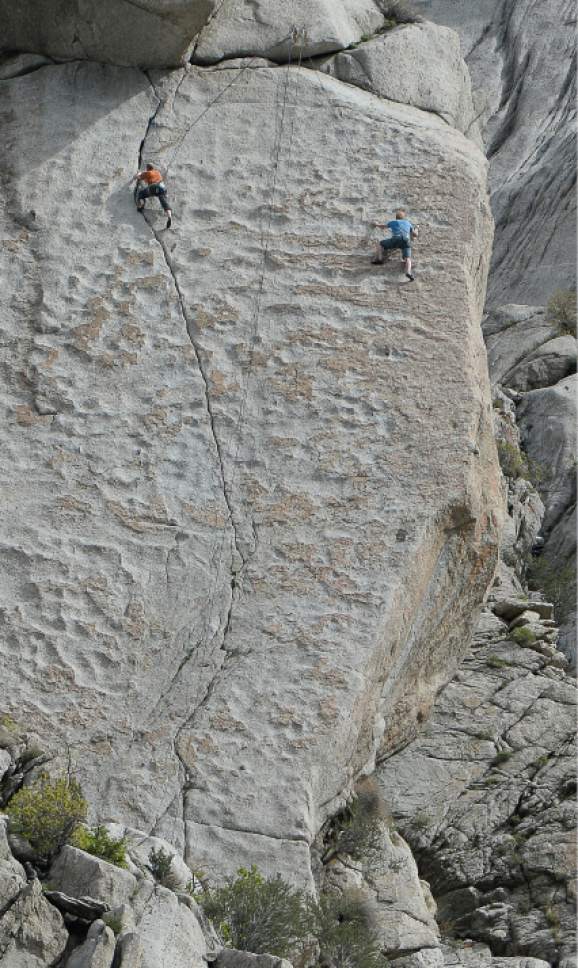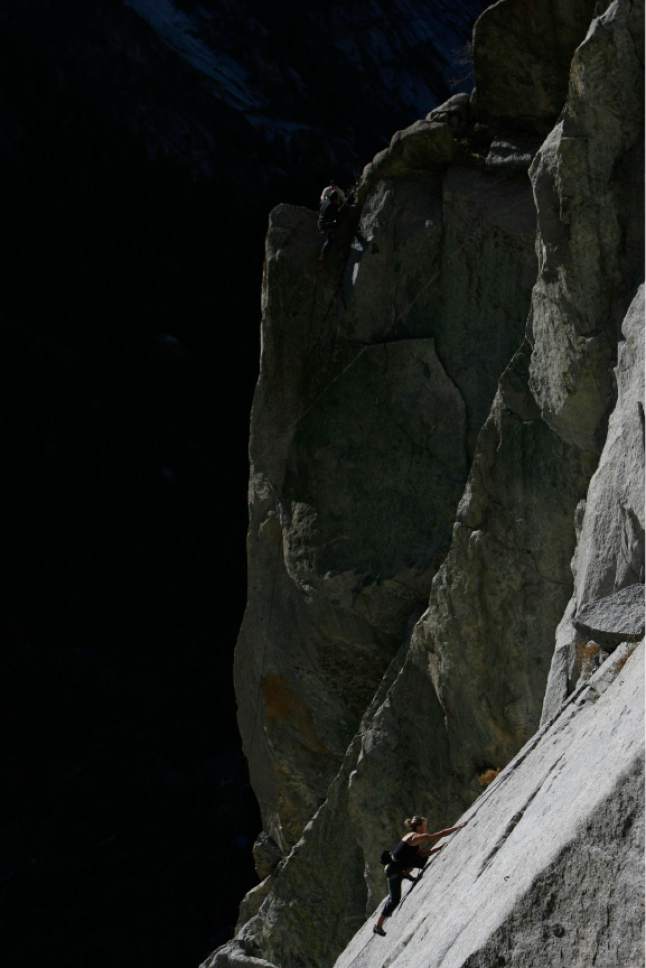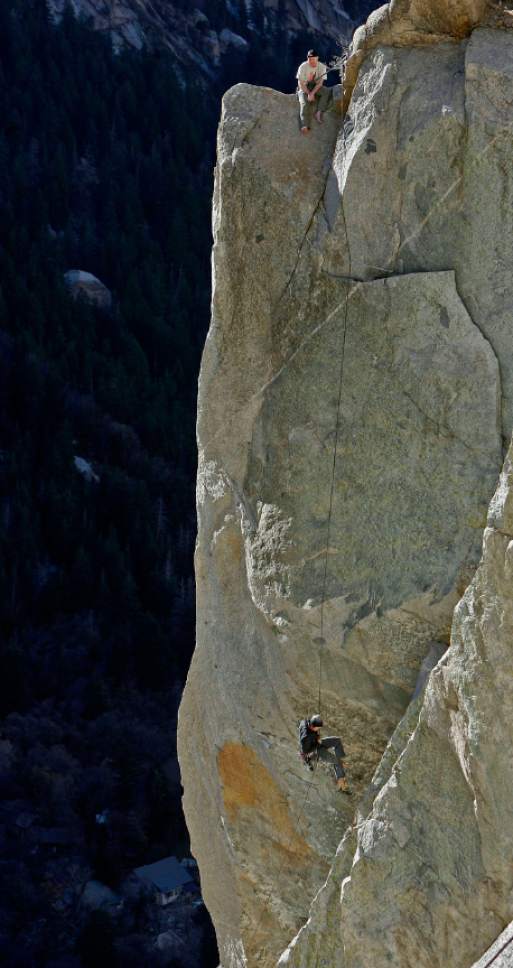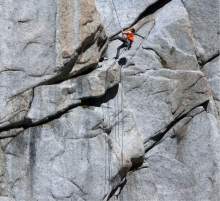This is an archived article that was published on sltrib.com in 2017, and information in the article may be outdated. It is provided only for personal research purposes and may not be reprinted.
It has been 56 years since Ted Wilson and Bob Stout put up Little Cottonwood Canyon's first climbing route at Gate Buttress, an area what has evolved into a world-class climbing destination on the edge of Utah's largest metro area.
Climbers have flocked to the granite faces and fins on the north side of the canyon mouth, which was once quarried for massive building blocks, without any formal agreement with the land's owner, The Church of Jesus Christ of Latter-day Saints. That will change Saturday, when the Salt Lake climbing community signs a lease with the church, formalizing a relationship that ensures access to 588 climbing routes and 138 boulder problems, and that permits land improvements meant to protect the area.
"The church has always been gracious about it. At one point, they were worried about their potential liability," said Wilson, Salt Lake City's former mayor. Wilson met with then-Presiding Bishop Henry B. Eyring in the 1980s and persuade him to continue allowing climbing access.
"I said we think there are Utah statutes that protect landowners from liability from recreational accidents," Wilson said Wednesday. "We also said we didn't know a climber who couldn't get over a fence. We laughed about that."
But climbers' paths to cliff bases were eroding into gullies that marred the hillside and threatened to degrade Little Cottonwood Creek. The national Access Fund and Salt Lake Climbers Alliance (SLCA), which includes Wilson among its board members, worked out a lease agreement with the church to ensure that the 140-acre parcel would be cared for properly.
"The climbing community is deeply committed to the environmental stewardship of the property. This lease not only secures access for climbing at the property, but also allows the community to be better stewards of the places we love to play," said SLCA Executive Director Julia Geisler. "The SLCA is actively planning for recreation infrastructure improvements to begin in 2018, including trail and staging area work that will reduce erosion and impacts on the Salt Lake City watershed."
The parcel hugs the north side of the highway for about a mile up the canyon from a massive church vault. It is home to storied routes known as Dihedrals, Kermit's Wall, Lizard Head Buttress and Plumb Line.
In the 1950s, climbers considered Little Cottonwood's sloping granite too smooth, preferring the quartzite of Big Cottonwood Canyon. But Wilson and his climbing partners took another look after Yosemite Valley's granite began attracting the world's top climbers.
In 1961, Wilson and Stout put up the canyon's first route, dubbed Chickenhead Holiday in reference to the little black knobs that protrude from granite surfaces. These features, which allegedly resemble heads of chickens, make footholds and handholds. The route would later garner a 5.6 rating, considered extremely easy by modern standards. "It was good enough that we would go back and tell our buddies," Wilson said. "We were working against this myth that the rock was too smooth."
He wonders whether anyone climbs it anymore, but 50 years ago, Chickenhead Holiday spawned dozens of other friction routes that have since been eclipsed by challenging crack climbs.
The signing is to take place Saturday at 9 a.m. in the Gate Buttress parking area.
Brian Maffly covers public lands for The Salt Lake Tribune. Brian Maffly can be reached at bmaffly@sltrib.com or 801-257-8713.
Twitter: @brianmaffly









